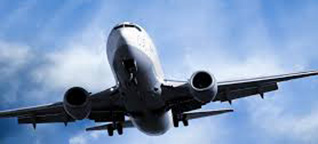Airline profitability improves with falling oil prices
Geneva: The International Air Transport Association (IATA) recorded
an outlook for improved industry profitability in its Economic
Performance of the Air Transport Industry report.
Airlines are expected to post a collective global net profit in 2014
of about US $19.9 billion (up from the US $18.0 billion projected in
June). This looks set to rise to US $25.0 billion in 2015.
Lower oil prices and stronger worldwide GDP growth are the main
drivers behind the improved profitability.
Consumers will benefit substantially from the stronger industry
performance as lower industry costs and efficiencies are passed through.
 The airline industry is highly competitive. After adjusting for
inflation, average return airfares (excluding taxes and surcharges) are
expected to fall by about 5.1% on 2014 levels and cargo rates are
expected to fall by 5.8%. The airline industry is highly competitive. After adjusting for
inflation, average return airfares (excluding taxes and surcharges) are
expected to fall by about 5.1% on 2014 levels and cargo rates are
expected to fall by 5.8%.
The anticpated US $25 billion net post-tax profit represents a 3.2%
margin. On a per passenger basis, airlines will make a net profit of US
$7.08 in 2015. That is up on the US $6.02 earned in 2014 and more than
double the US $3.38 earnings per passenger achieved in 2013.
The return on invested capital (ROIC) is expected to grow to 7.0%.
This is a substantial improvement on the 6.1% ROIC expected to be
achieved in 2014.
This is still 0.8 percentage points below the 7.8% weighted average
cost of capital (WACC). There is still some ground to cover before
achieving sustainable margins.
"The industry outlook is improving. The global economy continues to
recover and the fall in oil prices should strengthen the upturn next
year. While we see airlines making US $25 billion in 2015, it is
important to remember that this is still just a 3.2% net profit margin,"
said IATA Director General and CEO Tony Tyler.
"The industry story is largely positive, but there are a number of
risks in today's global environment - political unrest, conflicts and
some weak regional economies - among them. And a 3.2% net profit margin
does not leave much room for a deterioration in the external environment
before profits are hit," he said.
"Stronger industry performance is good news for all. It's a highly
competitive industry and consumers - travellers and shippers - will see
lower costs in 2015 as the impact of lower oil prices kick in. Airline
investors will see ROIC move closer to the WACC," Tyler said.
"A healthy air transport sector will help governments in their
overall objective to stimulate the economic growth needed to put the
impact of the global financial crisis behind them," he said.
Oil prices: Oil prices have fallen substantially in recent months and
this is expected to continue into 2015 with the full-year average price
expected to be US $85 per barrel (Brent).
If that assumption is correct, it would be the first time that the
average oil price has fallen below US $100 per barrel since 2010 (when
oil averaged US $79.4 per barrel).
Fuel prices: Jet fuel prices are expected to average at US $99.9 per
barrel in 2015 for a total fuel spend of US $192 billion which
represents 26% of total industry costs.
It is important to note that the impact of lower fuel prices will be
realised with a time lag, due to forward fuel-buying practices.
Improving fuel efficiency continues to be a priority for airlines. Fuel
efficiency is estimated to have improved by 1.8% in 2014 and a further
improvement is expected in 2015.
Fuel efficiency improvements could be accelerated by reducing the 5%
of wasted fuel burn as a result of airspace and airport inefficiencies.
Economic growth: Global GDP is expected to grow by 3.2% in 2015, up
from 2.6% in 2014. This will be the first time that global GDP has
broken over 3.0% since 2010 (when global GDP grew by 4.1% in a
post-recession bounce back), this time boosted by the fall in oil
prices.
Passenger trends: Passenger traffic is expected to grow by 7.0% in
2015 which is well-above the 5.5% growth trend of the past two decades.
Capacity growth is expected to outstrip this slightly at 7.3%, pushing
the passenger load factor to 79.6% (slightly down on the 79.9% expected
for 2014).
The fall in the price of fuel is expected to lead to cheaper airfares
for consumers. After adjusting for inflation, average return air fares
(excluding surcharges and taxes) are expected to fall by 5.1% to US $458
in 2015. Total passenger numbers are expected to grow to 3.5 billion and
passenger revenues are expected to grow to US $623 billion.
Cargo trends: Cargo volumes are expected to grow by 4.5% in 2015
(slightly ahead of the 4.3% growth expected for 2014). The air cargo
business has faced weak markets and increasing competition since 2011.
There has been an uptick in demand recently but cargo remains a tough
business.
The real cost of transporting goods in 2015 is expected to fall by
5.8%. In total, some 53.5 million tonnes of air cargo is expected to be
flown in 2015.
Total cargo revenue is expected to rise to $63 billion, but that is
still some 5% lower than in 2010.
All regions are expected to report improved net profitability in 2015
over 2014. However, there are stark differences in profitability among
the regions.
|

